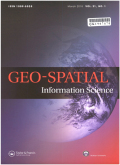- 钛学术文献服务平台 \
- 学术期刊 \
- 基础科学期刊 \
- 天文学、地球科学期刊 \
- 地球空间信息科学学报(英文版)期刊 \
Integration of maximum crop response with machine learning regression model to timely estimate crop yield
Integration of maximum crop response with machine learning regression model to timely estimate crop yield
基本信息来源于合作网站,原文需代理用户跳转至来源网站获取
摘要:
Timely and reliable estimation of regional crop yield is a vital component of food security assessment, especially in developing regions. The traditional crop forecasting methods need ample time and labor to collect and process field data to release official yield reports. Satellite remote sensing data is considered a cost-effective and accurate way of predicting crop yield at pixel-level. In this study, maximum Enhanced Vegetation Index (EVI) during the crop-growing season was integrated with Machine Learning Regression (MLR) models to estimate wheat and rice yields in Pakistan's Punjab province. Five MLR models were compared using a fivefold cross-validation method for their predictive accuracy. The study results revealed that the regression model based on the Gaussian process outperformed over other models. The best performing model attained coefficient of determination (R2), Root Mean Square Error (RMSE, t/ ha), and Mean Absolute Error (MAE, t/ha) of 0.75, 0.281, and 0.236 for wheat; 0.68, 0.112, and 0.091 for rice, respectively. The proposed method made it feasible to predict wheat and rice 6– 8 weeks before the harvest. The early prediction of crop yield and its spatial distribution in the region can help formulate efficient agricultural policies for sustainable social, environmental, and economic progress.

推荐文章
Spatial prediction of landslide susceptibility using GIS-based statistical and machine learning mode
Landslide susceptibility mapping
Statistical model
Machine learning model
Four cases
Simulation of hail effects on crop yield losses for corn-belt states in USA
crops
economic analysis
agriculture
EPIC
soil type
hail damage
simulation model
内容分析
关键词云
关键词热度
相关文献总数
(/次)
(/年)
文献信息
| 篇名 | Integration of maximum crop response with machine learning regression model to timely estimate crop yield | ||
| 来源期刊 | 地球空间信息科学学报(英文版) | 学科 | |
| 关键词 | |||
| 年,卷(期) | 2021,(3) | 所属期刊栏目 | |
| 研究方向 | 页码范围 | 474-483 | |
| 页数 | 10页 | 分类号 | |
| 字数 | 语种 | 英文 | |
| DOI | |||
五维指标
引文网络
引文网络
二级参考文献 (0)
共引文献 (0)
参考文献 (0)
节点文献
引证文献 (0)
同被引文献 (0)
二级引证文献 (0)
2021(0)
- 参考文献(0)
- 二级参考文献(0)
- 引证文献(0)
- 二级引证文献(0)
引文网络交叉学科
相关学者/机构
期刊影响力
地球空间信息科学学报(英文版)
主办单位:
武汉大学(原武汉测绘科技大学)
出版周期:
季刊
ISSN:
1009-5020
CN:
42-1610/P
开本:
16开
出版地:
武汉市珞瑜路129号武汉大学测绘校区
邮发代号:
创刊时间:
1998
语种:
eng
出版文献量(篇)
958
总下载数(次)
0
总被引数(次)
2719
期刊文献
相关文献
推荐文献
- 期刊分类
- 期刊(年)
- 期刊(期)
- 期刊推荐
力学
化学
地球物理学
地质学
基础科学综合
大学学报
天文学
天文学、地球科学
数学
气象学
海洋学
物理学
生物学
生物科学
自然地理学和测绘学
自然科学总论
自然科学理论与方法
资源科学
非线性科学与系统科学
地球空间信息科学学报(英文版)2022
地球空间信息科学学报(英文版)2021
地球空间信息科学学报(英文版)2020
地球空间信息科学学报(英文版)2019
地球空间信息科学学报(英文版)2018
地球空间信息科学学报(英文版)2017
地球空间信息科学学报(英文版)2016
地球空间信息科学学报(英文版)2015
地球空间信息科学学报(英文版)2014
地球空间信息科学学报(英文版)2013
地球空间信息科学学报(英文版)2012
地球空间信息科学学报(英文版)2011
地球空间信息科学学报(英文版)2010
地球空间信息科学学报(英文版)2009
地球空间信息科学学报(英文版)2008
地球空间信息科学学报(英文版)2007
地球空间信息科学学报(英文版)2006
地球空间信息科学学报(英文版)2005
地球空间信息科学学报(英文版)2004
地球空间信息科学学报(英文版)2003
地球空间信息科学学报(英文版)2002
地球空间信息科学学报(英文版)2001
地球空间信息科学学报(英文版)2000

 免费查重
免费查重










